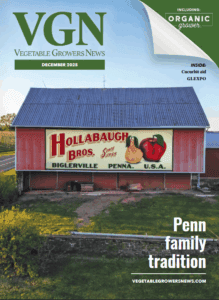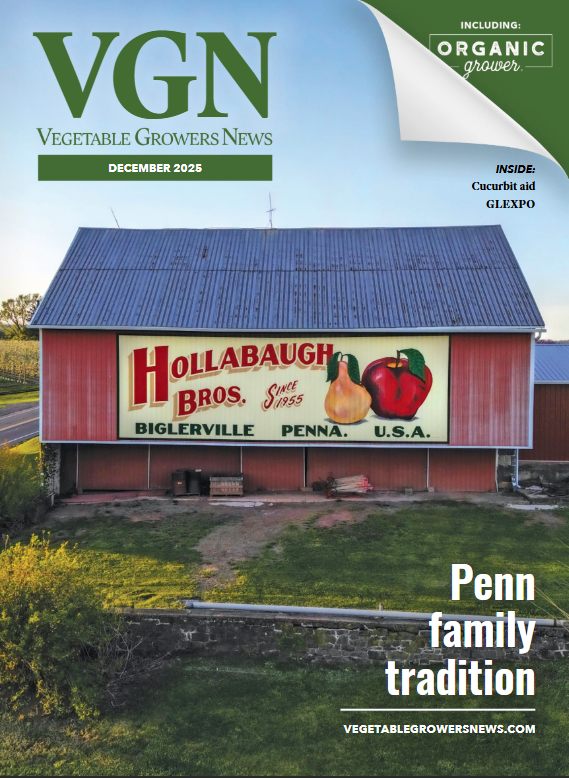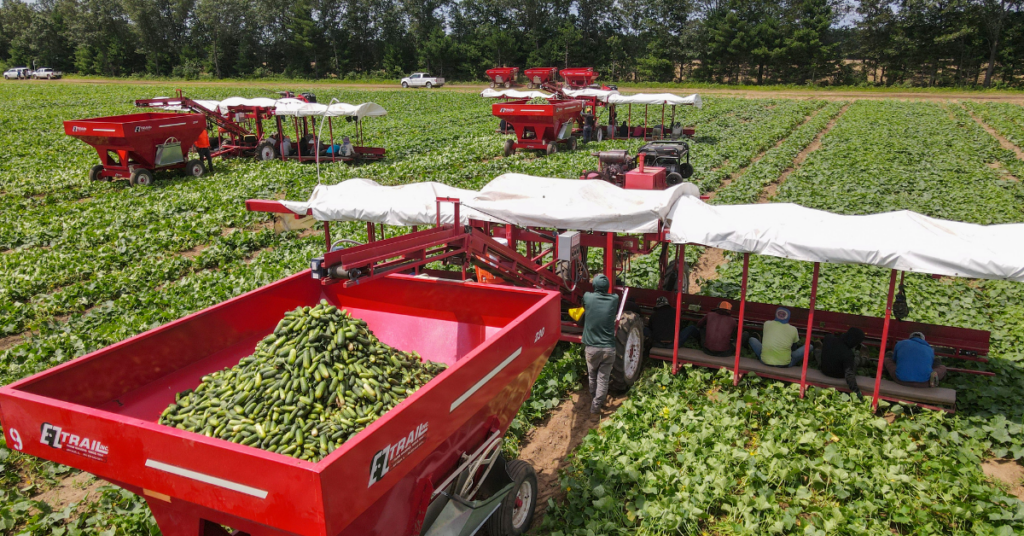
Nov 22, 2024Hartung Brothers marks 50 years of growth with innovative cucumber production methods
For 50 years, Hartung Brothers has grown from a small family venture into a leading grower, processor, and shipper of pickling cucumbers. The company attributes its success to advanced cucumber production methods, efficient harvest technology, and a culture that values worker input.
From 40 acres to international operations
In 1974, 17-year-old twins Dan and Don Hartung rented 40 acres of land to grow corn, using borrowed and rented equipment. Their siblings — Robert, Randy, Gayle Ann, Steve, and John — soon joined them in the fields.
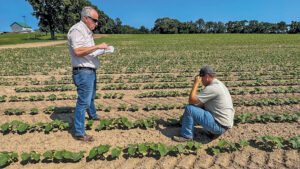
After a successful harvest in 1975, the family incorporated Hartung Brothers with their father, Galen. Over time, more siblings, including Tara and James, became shareholders.
Today, Hartung Brothers grows cucumbers across Wisconsin, Michigan, Ohio, Canada and, most recently, the Yucatán region of Mexico. The vertically integrated company manages every stage of production, from farming and brining cucumbers to logistics, seed corn production, and custom farming.
Diversification as a strength
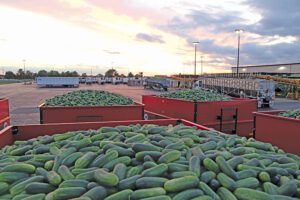
“We pride ourselves on diversified portfolios,” said Joshua Duley, vice president of the cucumber division. “We’re always growing cucumbers in two or three regions at the same time, so if weather or adversity hits one area, there are others still in production. Being vertically integrated helps us control logistics and efficiencies along the value chain.”
For 30 years, Hartung Brothers grew green beans for contractors and expanded into other vegetables, including carrots, hot peppers, and red beets.
When canning companies went bankrupt and government programs ended, the family reinvested capital into cucumbers. That pivot in 1997 set the stage for refining the company’s specialized cucumber production methods.
Family-run, broadly managed
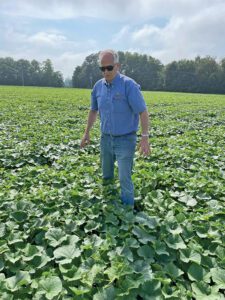
Although several partners have retired, they remain shareholders. Dan Hartung now serves as CEO, with siblings and relatives in roles ranging from executive leadership and complication to IT, logistics, and accounting.
Extended family members manage farm operations, harvesting, and technology systems.
Research and higher-yield cucumber production methods
Hartung Brothers works closely with seed companies to test new varieties. Its top-performing cucumbers include Lennon, Speed, Henley, Expedition, and Vlaspik. The company was an early adopter of seedless, parthenocarpic cucumbers, which boosted yields in Canadian fields from 540 bushels an acre to 1,200 bushels.
“If it wasn’t for the seed companies developing these varieties, the costs of growing cucumbers would have gone up a lot,” Duley said. “Without them, North America would not have remained competitive against countries with lower labor rates.”
Disease and pest management
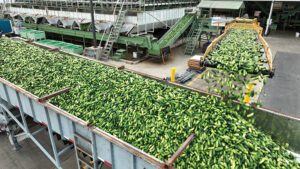
Phytophthora, or fruit rot, remains the industry’s most serious threat. “It’s the biggest worry and where the bulk of our research funding goes,” Duley said.
There was also a resistant strain of Downy mildew that devastated crops in 2006, and it still poses a major risk. Hartung Brothers relies on scouting services and Michigan State University’s spore trapping ot track the pathogen’s movement.
Seed treatment such as FarMore FI400 keep cucumber beetles in check, while Curbit and Command herbicides support weed control.
Hartung also partners with the University of Minnesota on drone spraying initiatives to modernize cucumber production methods.
Technology driving harvest efficiency in cucumber production methods
Hartung Brothers invests heavily in technology to refine cucumber production, including:
- Autosteer systems to improve planting, spraying, and harvesting, preventing losses and saving yield across millions of bushels.
- Vogel Engineering harvesters with eight-row heads to reduce soil compaction and increase labor and fuel efficiency.
- Employee-drive innovations, like retrofitting harvest machines with conveyors, which boosted hand-harvest efficiency by 20%/
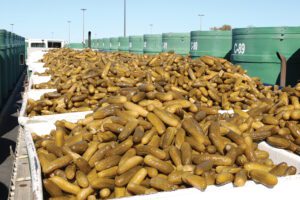
“With labor costs going up so much, gaining efficiencies in the hand harvest side of things was a critical innovation,” Duley Said.
The company also stores up to one million bushels of fermented cucumbers in brine tanks, ensuring a steady supply to processors and fresh-pack customers year-round.
Advice for growers
Duley encourages cucumber growers to adopt proactive production methods. “If you wait to spray or irrigate until you see diseases or drought stress, you’ll pay for it in yields,” he said. “A proactive seven-day spray program and consistent irrigation give you the best chance at success.”
A half-century of progress
What began as a 40-acre experiment by teenage brothers has grown into a vertically integrated company spanning North America. As Hartung Brothers celebrates its 50th years, their commitment to research, technology, and modern cucumber production methods ensures cucumbers will remain the signature crop for decades to come.
— Doug Ohlemeier, Assistant Editor














